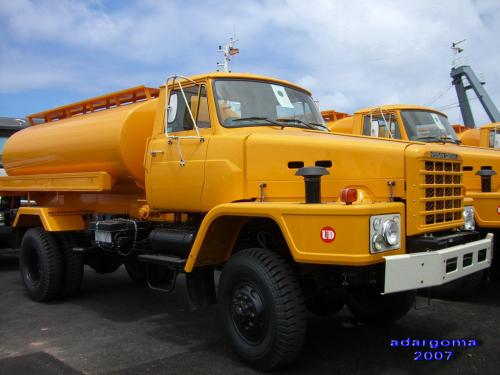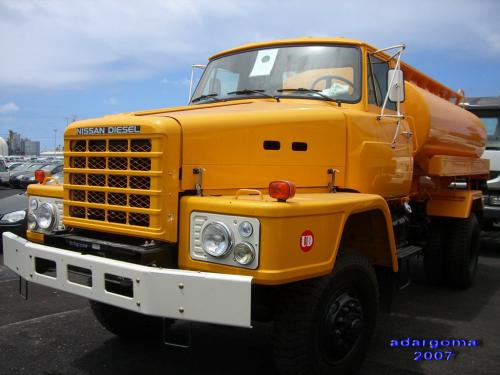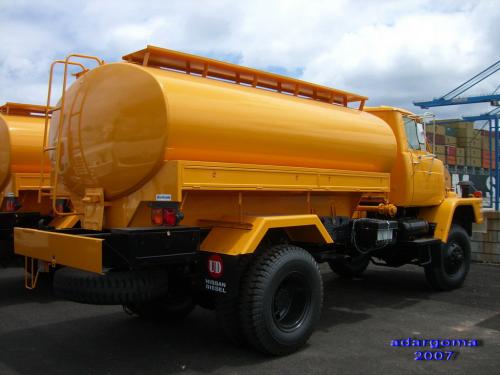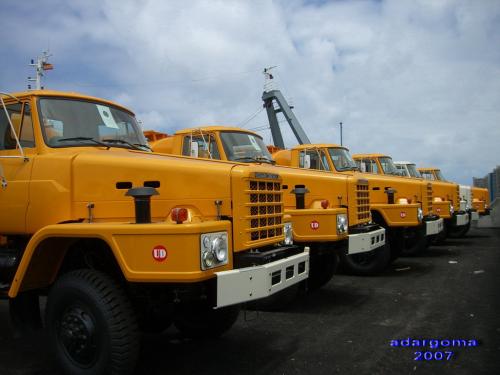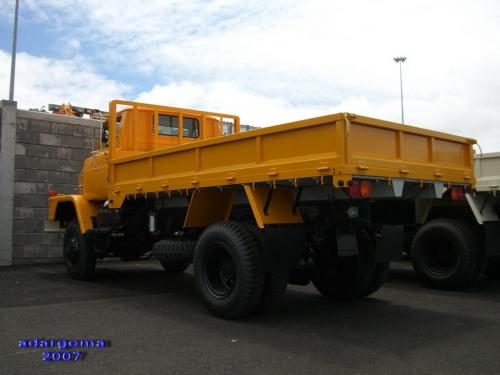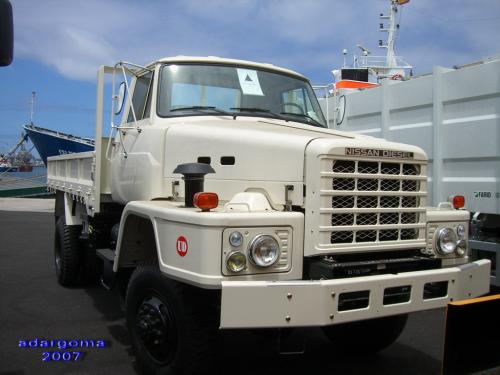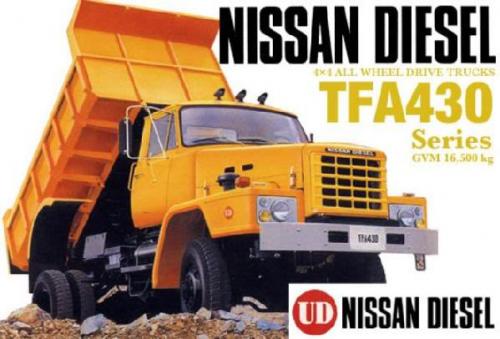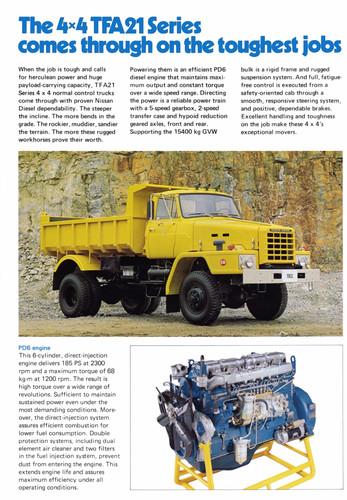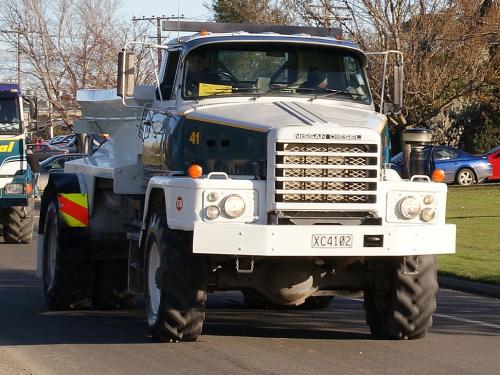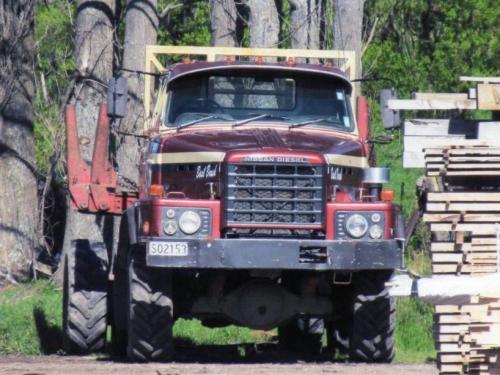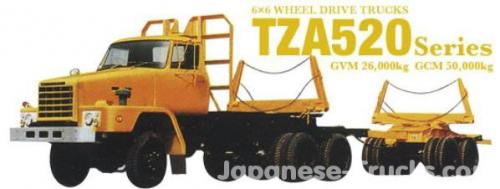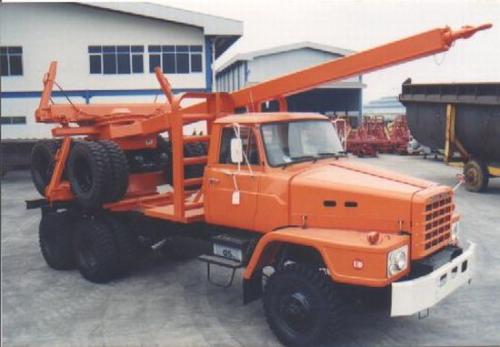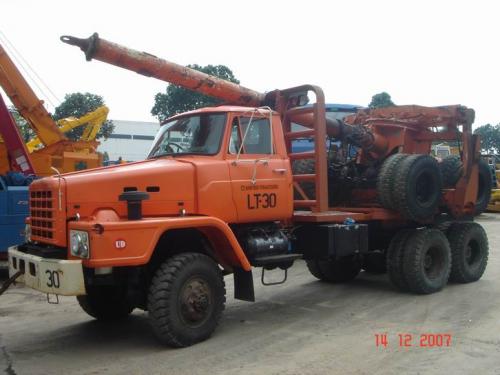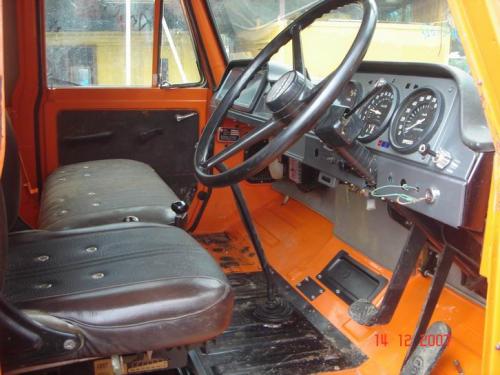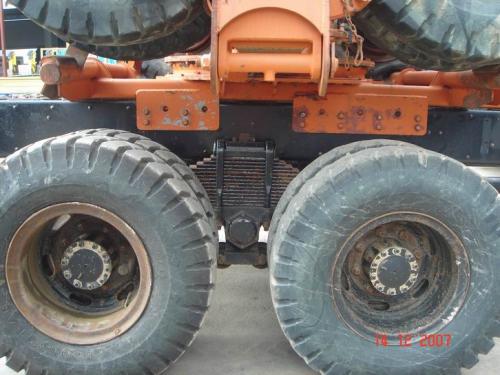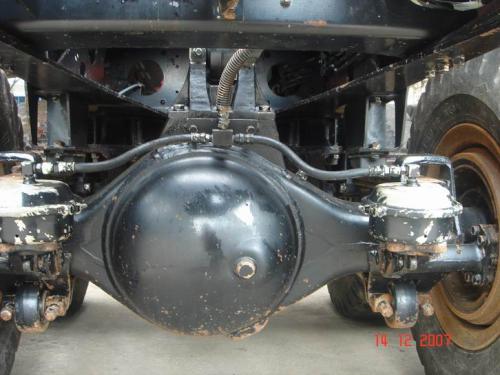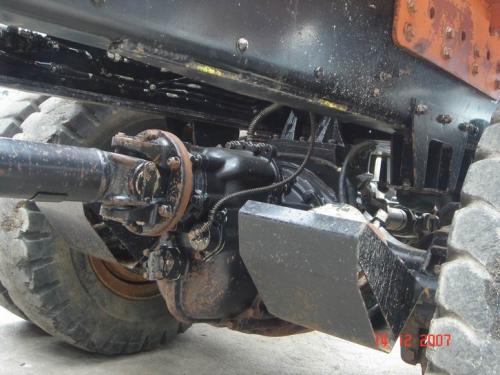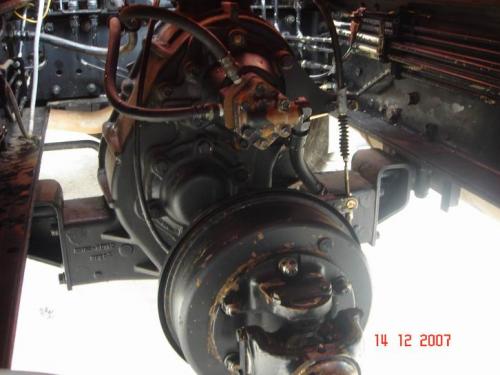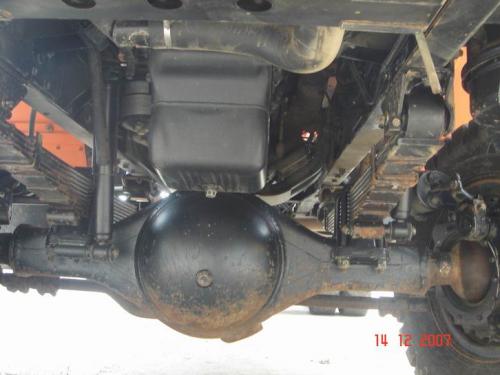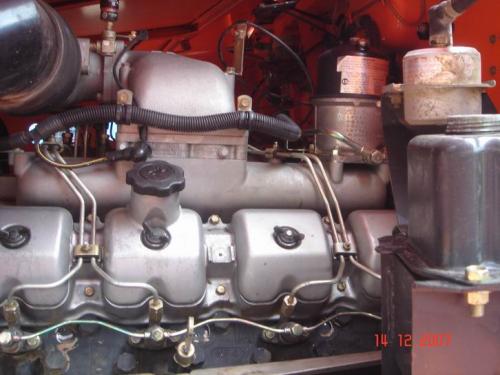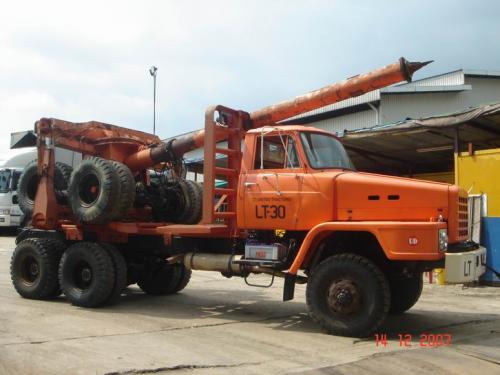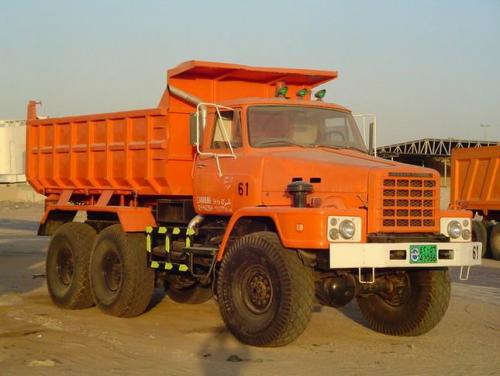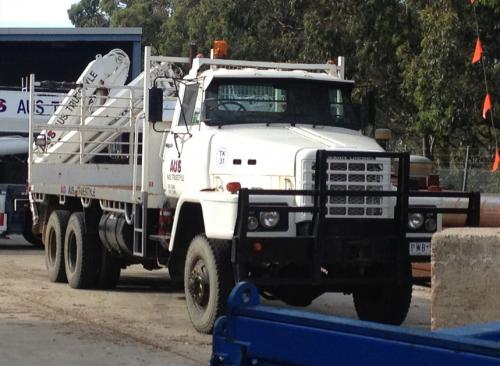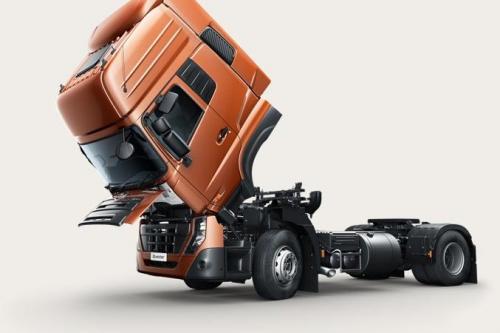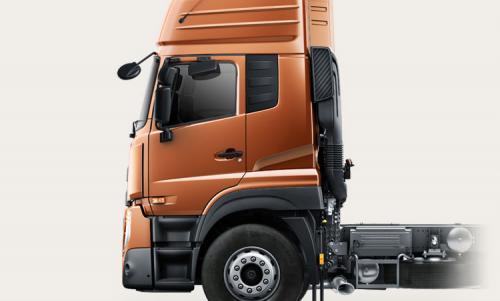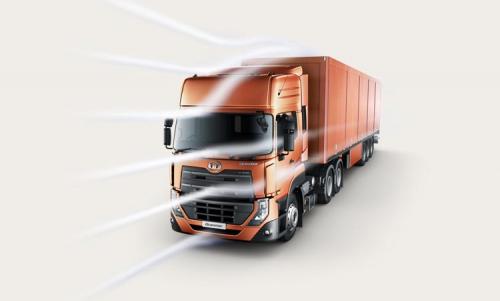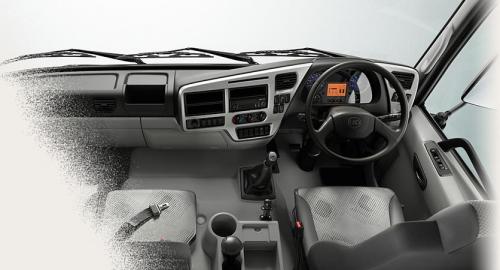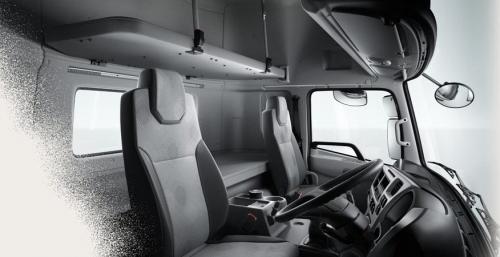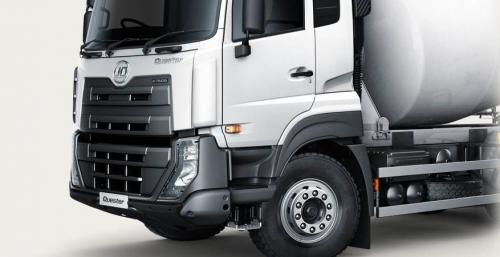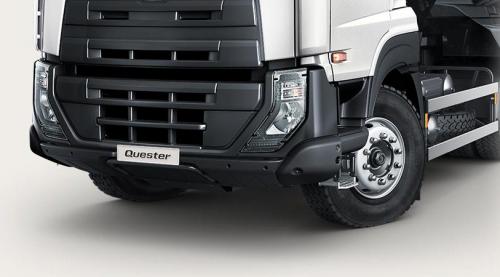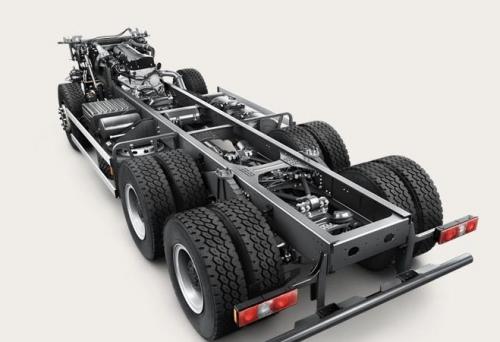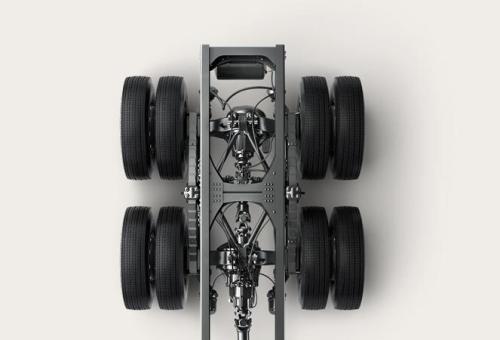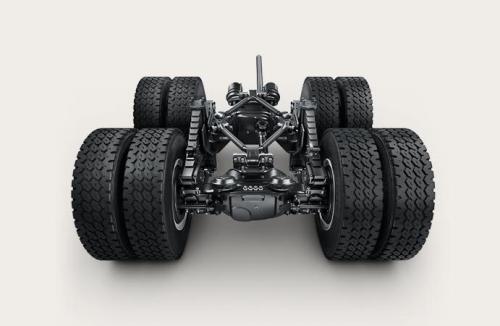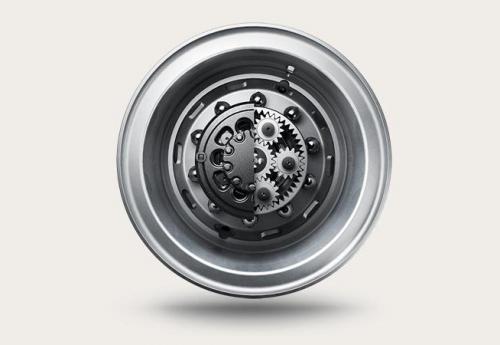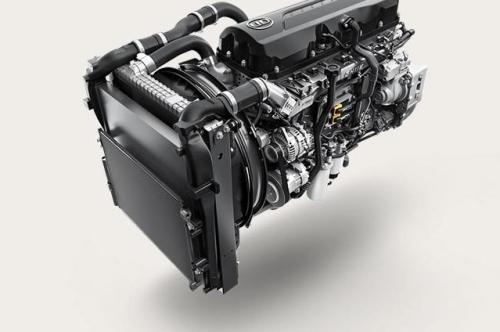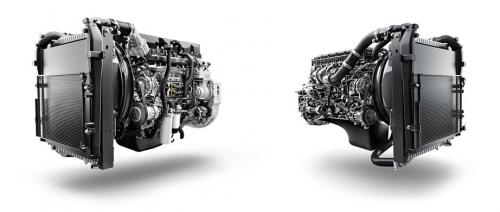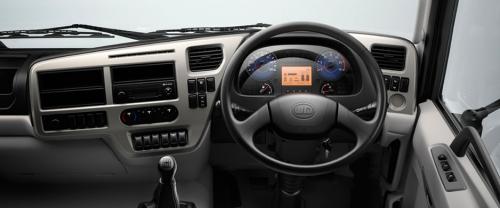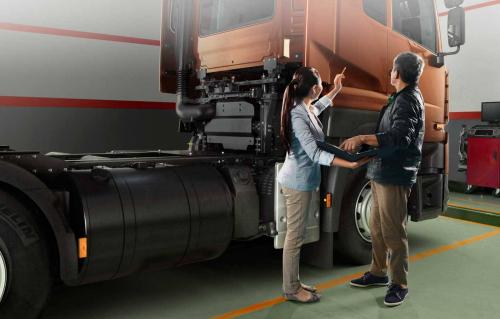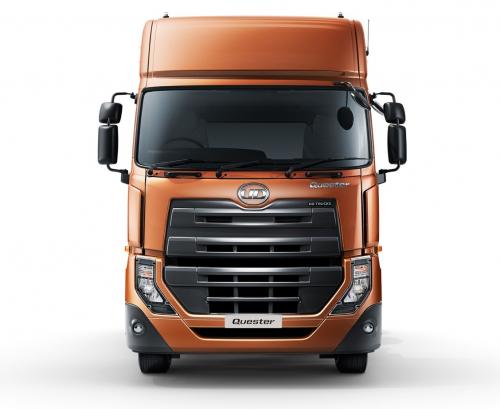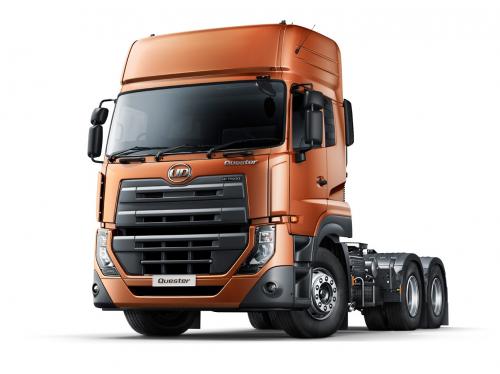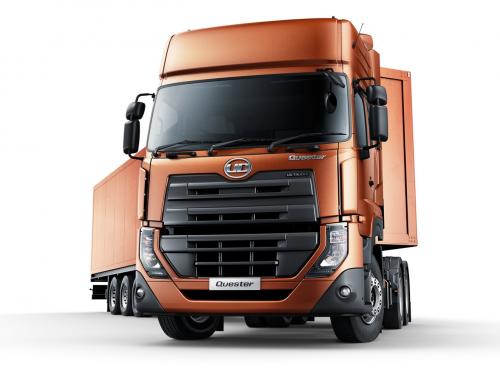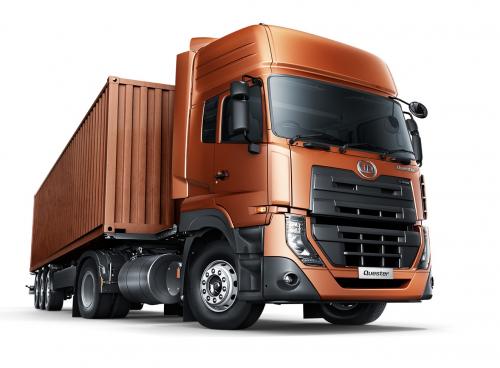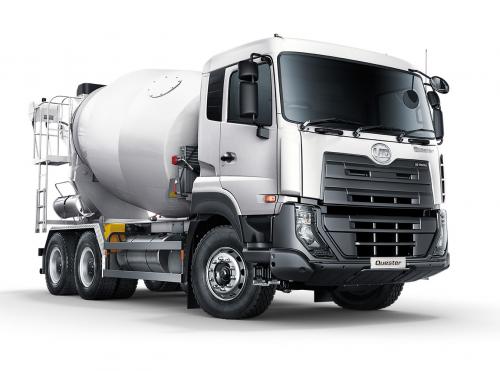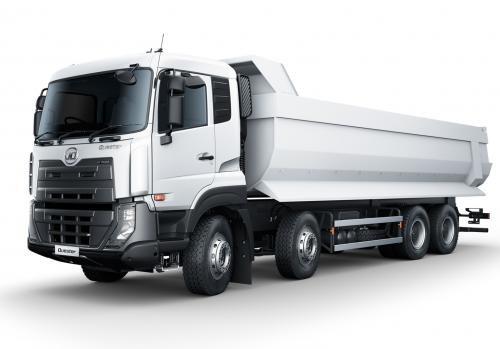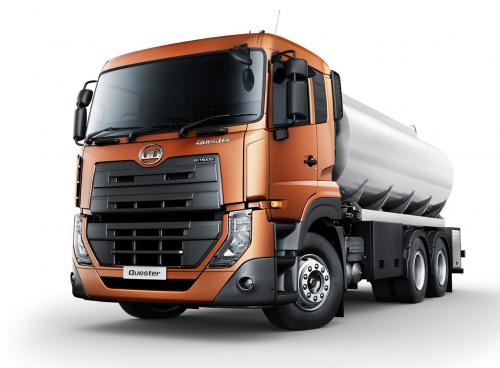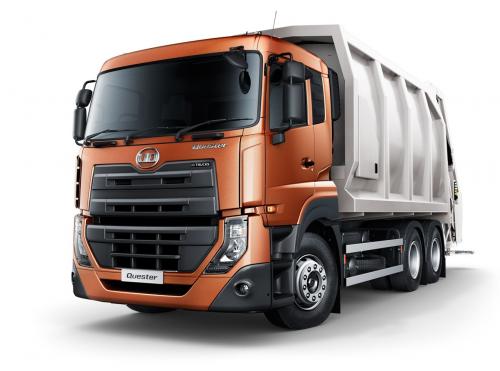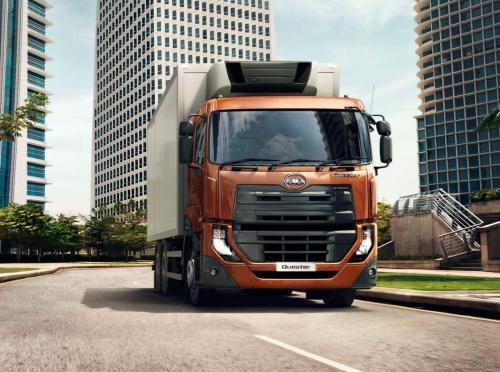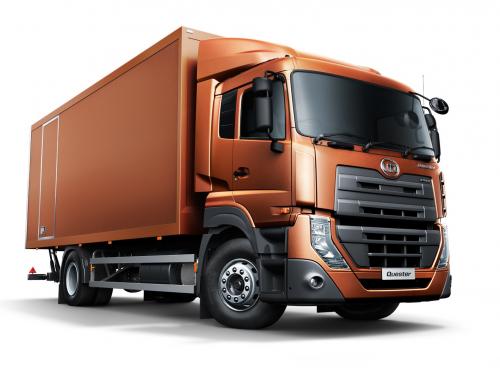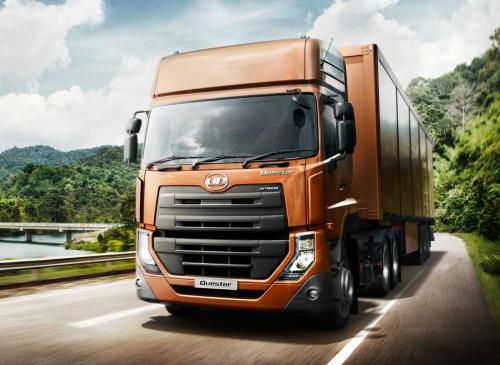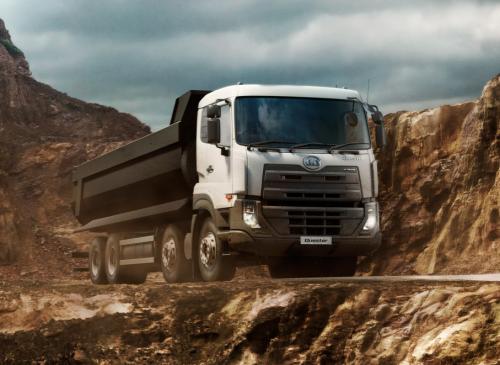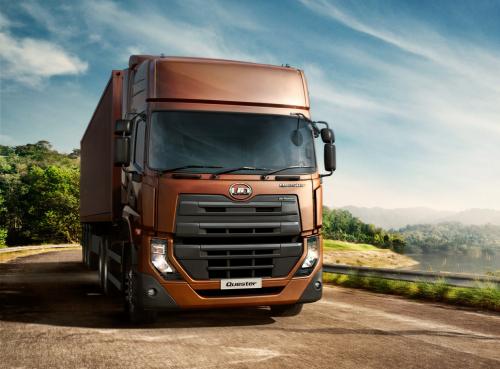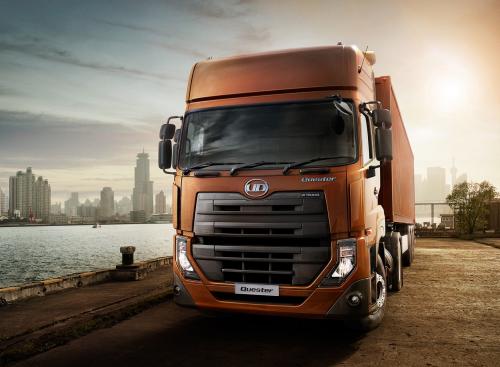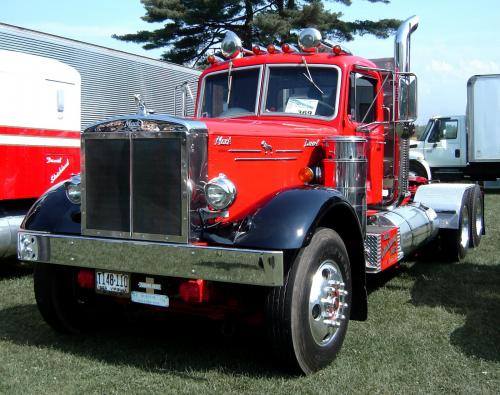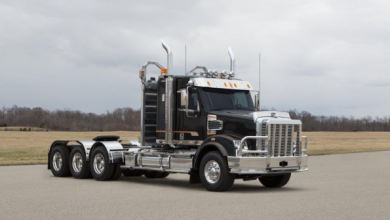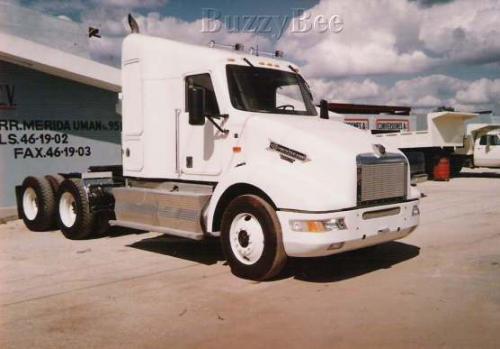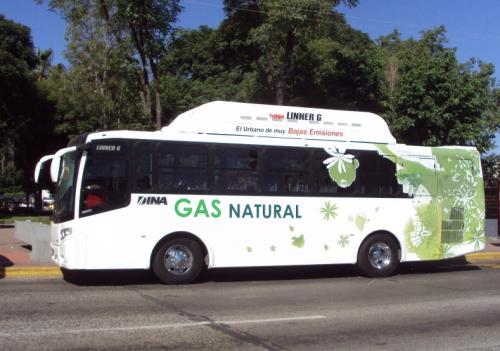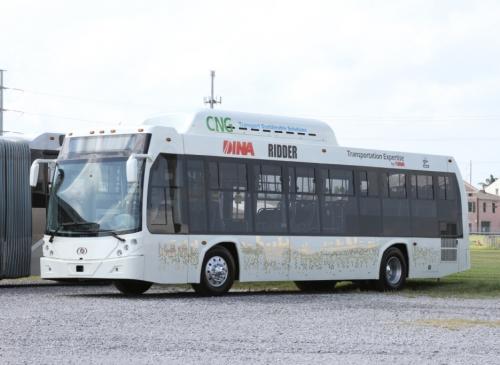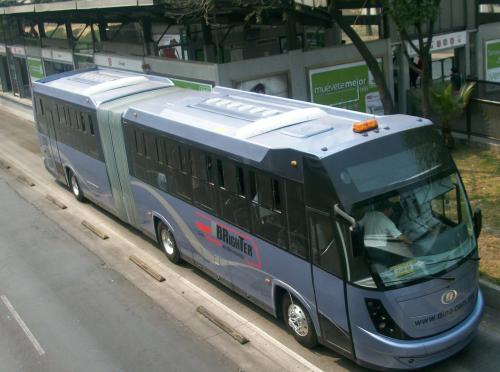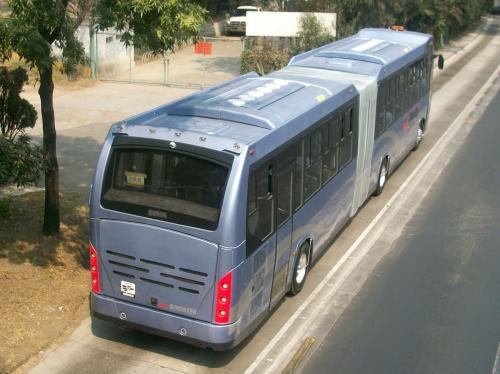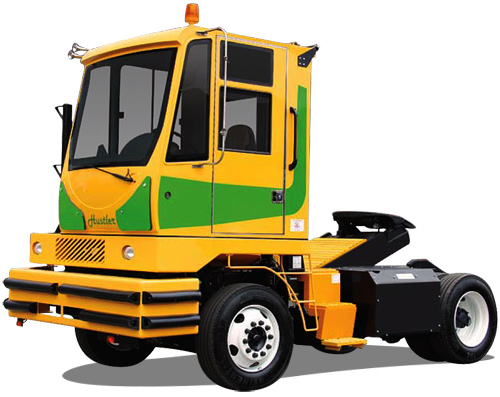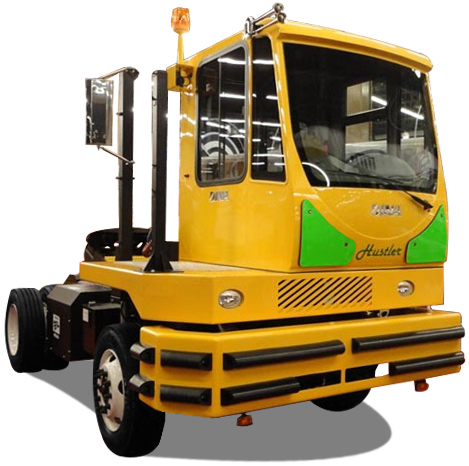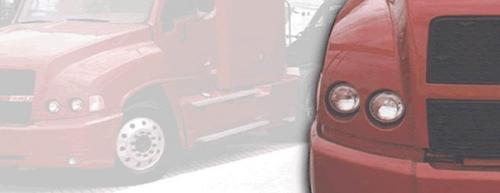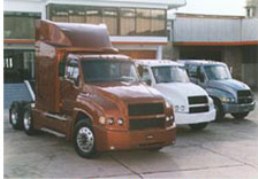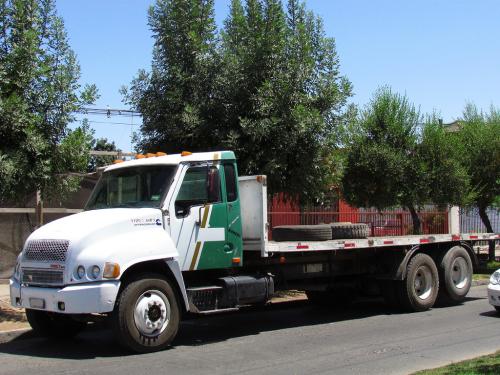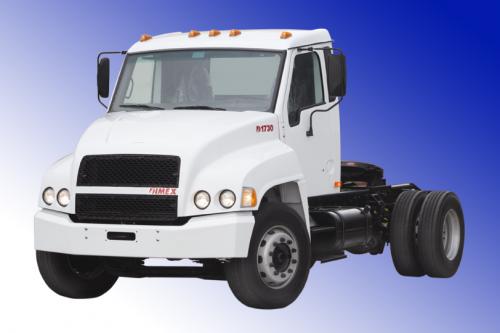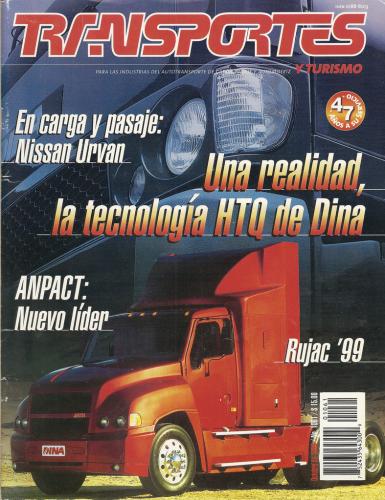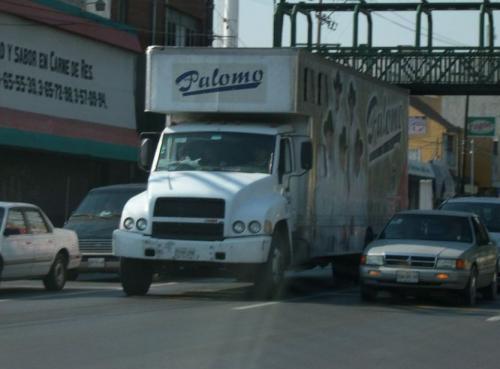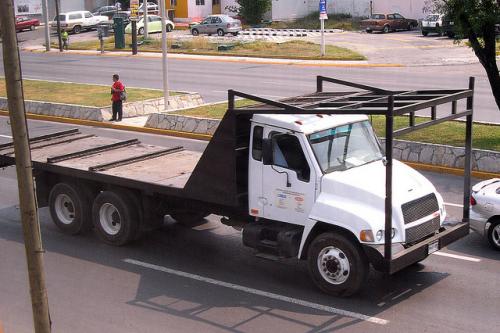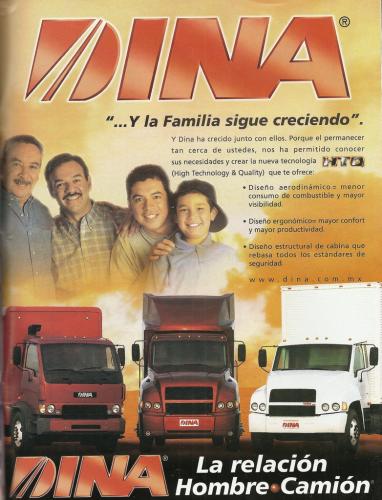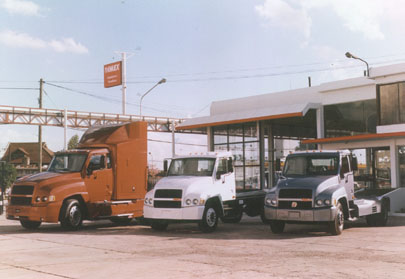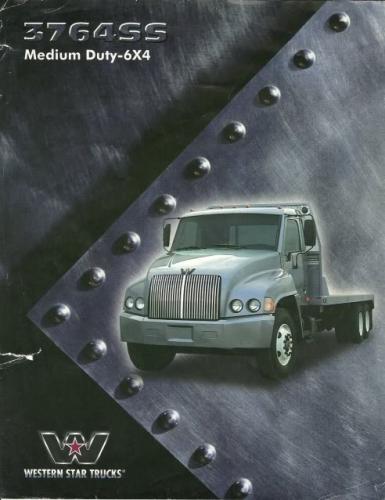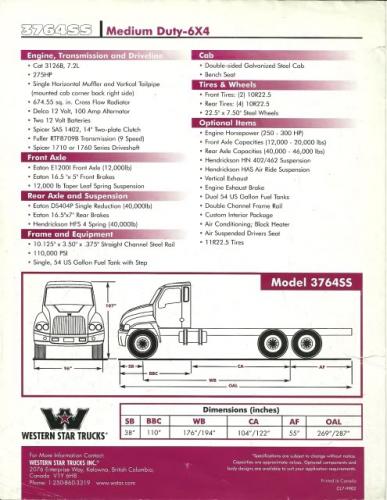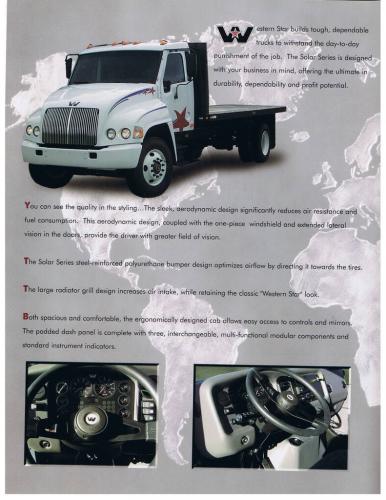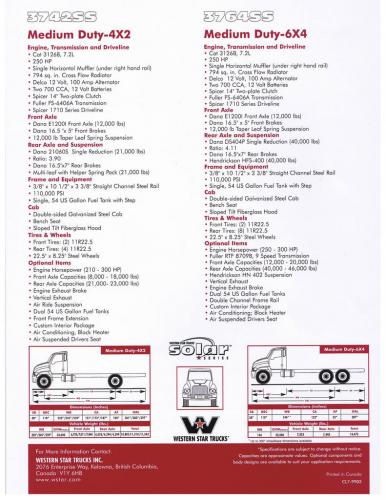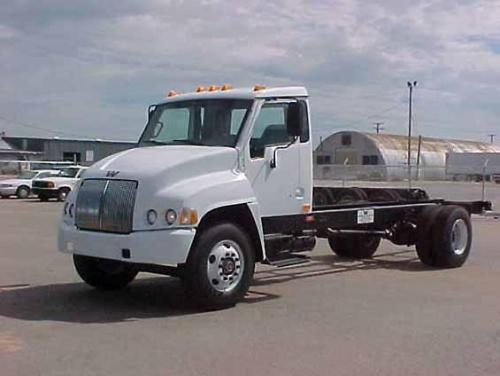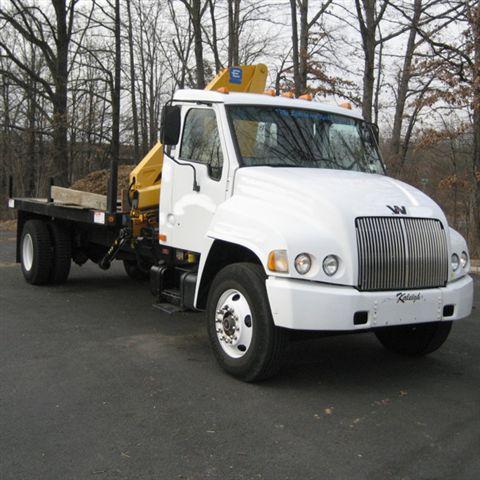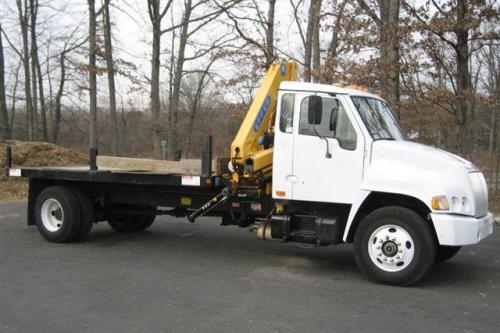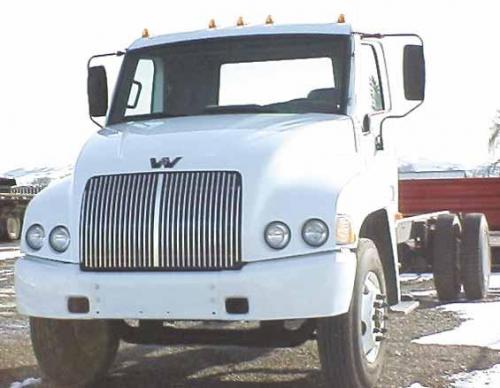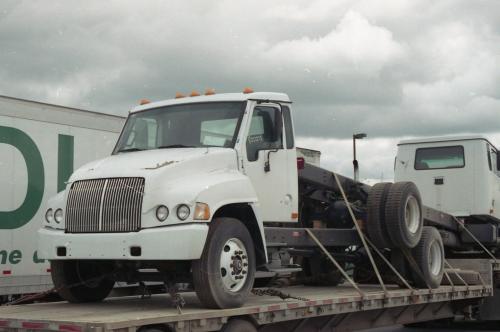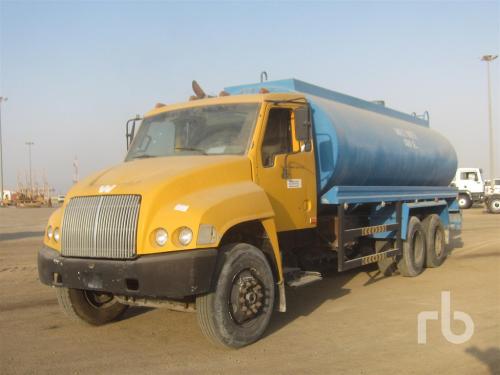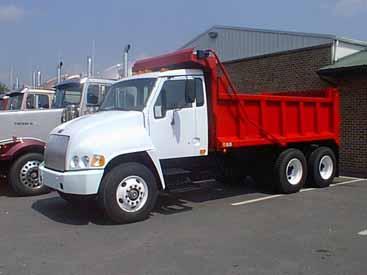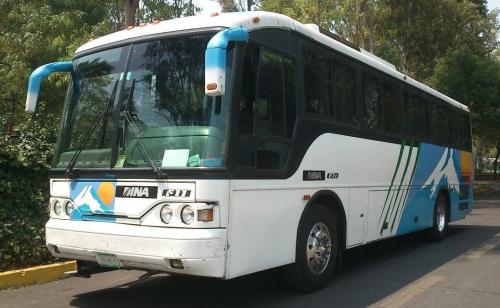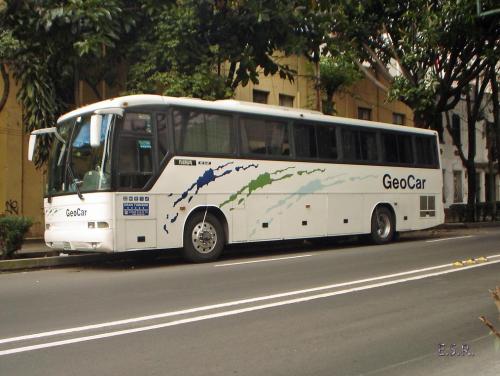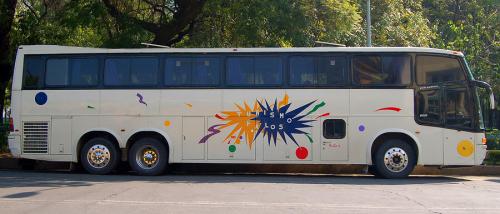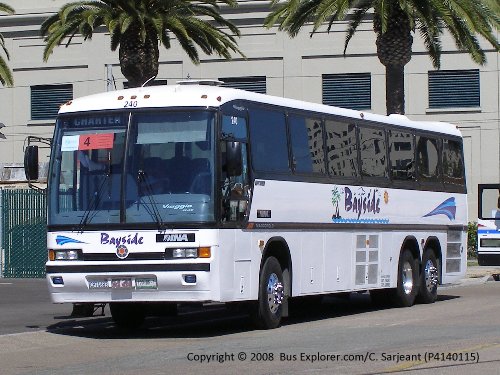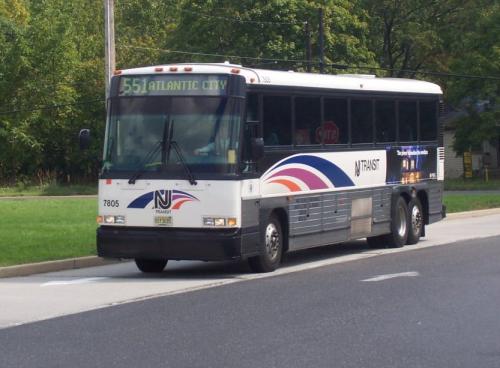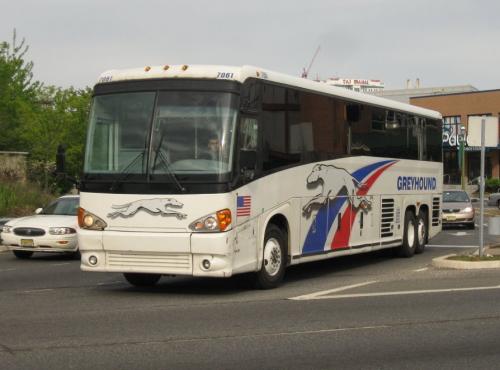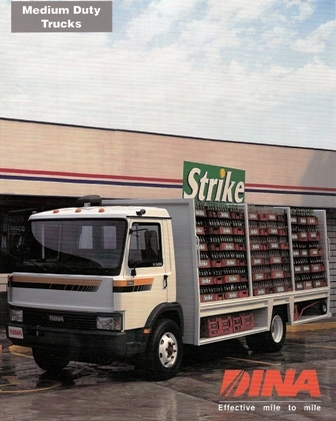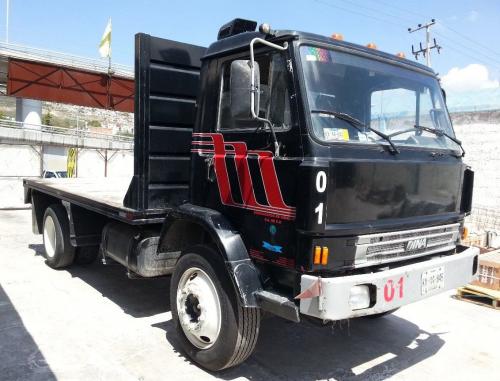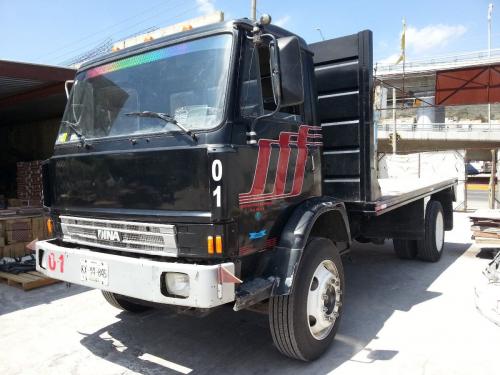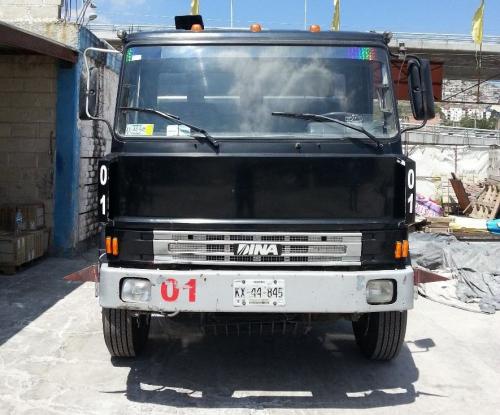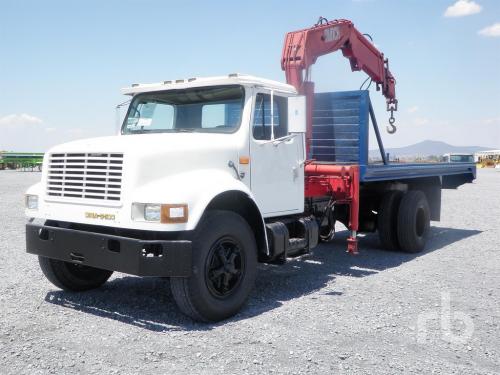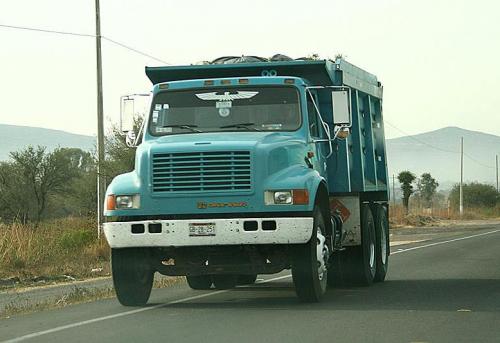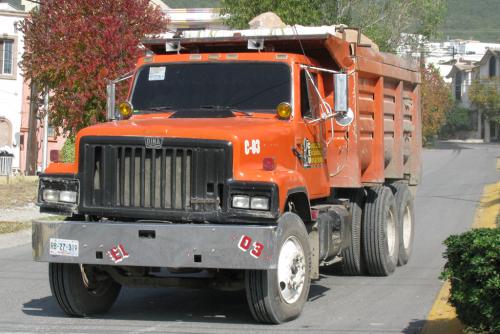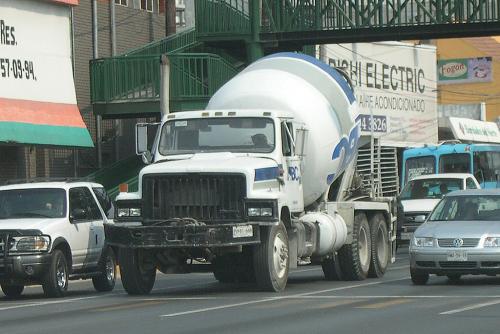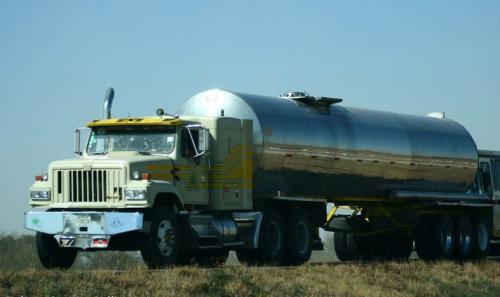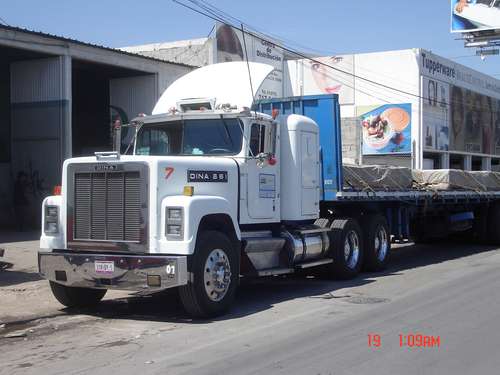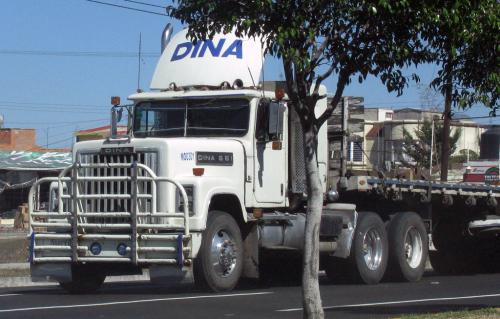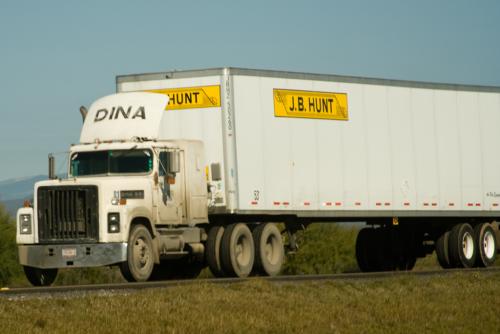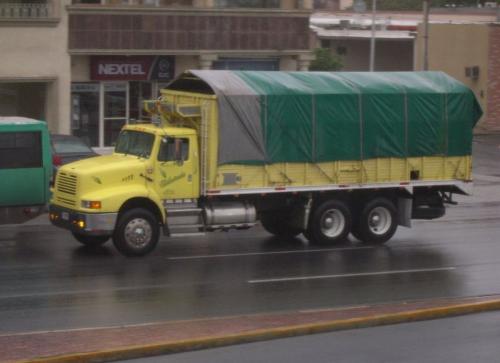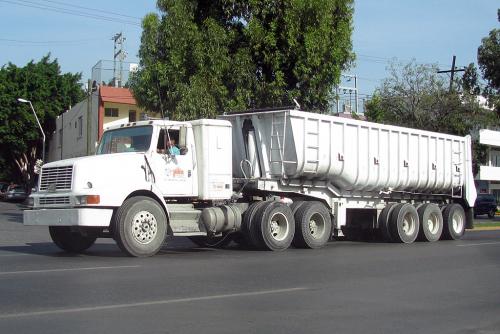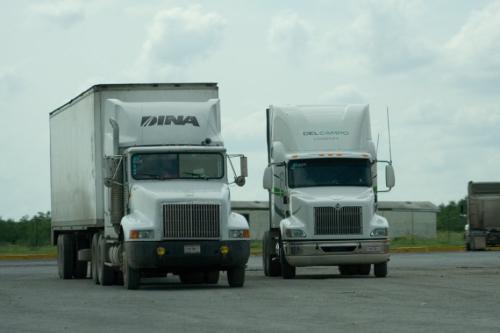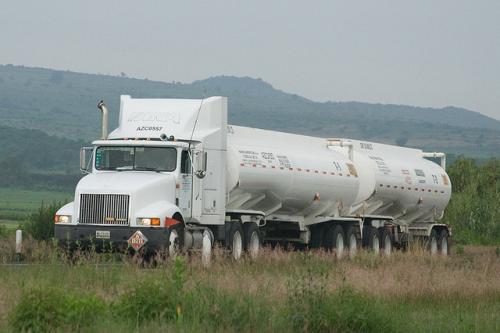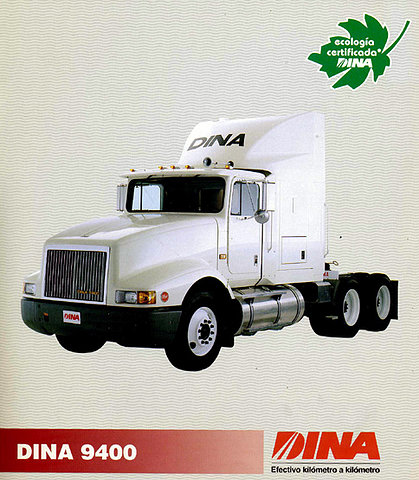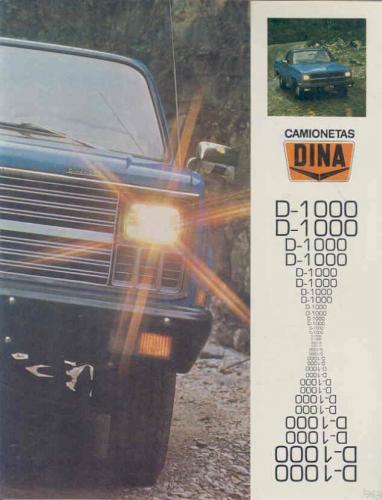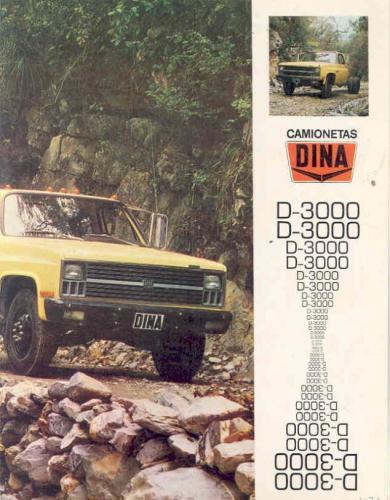
kscarbel
Pedigreed Bulldog-
Posts
1,114 -
Joined
-
Last visited
-
Days Won
8
Content Type
Profiles
Forums
Gallery
Events
Blogs
BMT Wiki
Collections
Store
Everything posted by kscarbel
-
Fleet Owner / August 28, 2013 HAMBURG, GERMANY. As the U.S. begins preparing for the introduction of a new oil-service category in early 2016, work is continuing behind the scenes to see to it that whatever oil emerges meets fleet needs. Dan Arcy, global OEM technical manager for Shell, gave international journalists, including those from Europe (which will soon be switching to Euro 6 emissions standards, which are very similar to U.S. EPA 2010) and Asia a behind-the-scenes peek into the thought processes of the task force responsible for developing PC-11 (proposed category 11) oils during a briefing at Shell’s Technology Centre in Hamburg, Germand. According to Arcy, there are a lot of organizations worldwide that define oil specifications, although API in the US, ACEA in Europe and JASO in Japan are the three primary drivers. (To read about PC-11, click here) In the U.S., as most now know, API is working on a new oil category, currently called PC-11. “A lot of what changes these specifications is emissions,” Arcy said. “There are different emissions standards going into effect all over the world.” The need for PC-11 in the U.S. is being driven by a number of factors, all related to the greenhouse gas emissions regulations being phased in between 2014 and 2017. “When this category was requested (by manufacturers), the real driver was to meet lower CO2 emissions…and improve fuel economy,” Arcy said. Other factors also include the increased use of biofuels (the old CJ-4 category did not include a test for biofuels), and newer equipment that is making older components that the CJ-4 test was developed on obsolete. By the time the first licensing for PC-11 is allowed, in January 2016, it will have been 10 years since the introduction of CJ-4. “The reason that’s significant is, historically, we’ve had new categories every 4-5 years,” Arcy said. “So it really is a testament to the durability and development [of CJ-4).” Arcy said the manufacturers have asked for the PC-11 category to meet higher oxidation stability, shear stability, and scuffing and adhesive wear as well as improved aeration benefits. “Air is not a real good lubricant, so they wanted to get the air out of oil,” Arcy said. The new category will include two subcategories, one to maintain historical heavy duty criteria, ie. higher viscosity grades such as 15W-30, and one to provide lower viscosity and improve fuel economy while maintaining durability. Importantly, Arcy said, there will be no specific test for fuel economy. “By going thinner in viscosity, we can get better fuel economy,” he said. “[but] there is no actual fuel economy test that is part of this proposed category although the benefit is improved fuel economy.” Arcy said there will be 11 tests for oils to meet the new category, seven “holdover” tests from the CJ-4 category and four new tests. One of the major milestones is the announcement of which oxidation test will be used. The oxidation taskforce has been looking at a number of possibilities and is expected to announce the test that will be used on Oct. 2, Arcy said. The reasons OEMs are pushing for lower viscosity oils is fairly obvious, according to Keith Selby, global technology manager, heavy duty oils. During his presentation, Selby noted four separate fuel economy tests, including three in the U.S., that prove the fuel economy value of lower-viscosity oil. A test of Class 7 Penske vehicles showed a 1.6% mpg benefit using a 10W-30 oil vs. a 15W-40. A similar test with a Class 7 medium-duty delivery truck in urban use found a 3.3% mpg improvement and a Schneider National test resulted in 1.57% improvement. Over in Europe, a nine-month test with an English grocery delivery company using a tractor running a Euro 5 engine and trailer not only found a 2% fuel economy improvement, but also no additional component wear. “It shows that you can use lower viscosity oils without added wear,” Selby said.
-
Fleet Owner / August 2013 The new WindShift engine fan product line from Horton is now going to offer more fan configurations, including a wider selection of computer-optimized blades.The new WindShift WSC and WSD blade designs, for starters, should provide maximum efficiency in low-restriction airflow applications such as HVAC [heating, ventilation, and air conditioning], ventilation, stationary power generators, auxiliary coolers and others. Engineered to fit in a narrower, more compact space, these new blades have less deflection, resulting in increased durability. Horton said these new fan designs are constructed with clamshell knuckles that clamp each blade to a 0.25-inch steel center disk, allowing the blades to be set to a specific pitch angle for increased airflow. Other options include clockwise or counterclockwise rotation and custom center disks for virtually any blade count, fan diameter and pilot or bolt circle pattern, said Jeff Wood, Horton’s product manager for fans. “By offering our customers a greater range of modular fan solutions, we can engineer fans to meet or exceed the cooling demands for more applications,” he explained. “This flexibility combined with unique manufacturing processes and Horton’s exceptional service allows us to deliver custom-configured fans with shorter lead times.”
-
Bloomberg / August 29, 2013 Scania said an arms-length policy on cooperation with majority investor Volkswagen and MAN remains in place after a Swedish shareholders group called for an independent audit of the companies’ transactions. “If a third party buys something from us, we transfer value in the form of a product and get money for that, and the same principle should apply when you cooperate with someone,” Erik Ljungberg, a spokesman at Soedertaelje, Sweden-based Scania, said in a phone interview today. “If we are going to cooperate on something, it must benefit us, we must gain from it. If we do, everyone benefits.” The Swedish Shareholders’ Association, which represents individuals with small stakes in the country’s traded companies, called this month for an independent monitor to evaluate cooperation between truckmaker Scania and Wolfsburg, Germany-based Volkswagen, Europe’s biggest car manufacturer, to ensure that minority investors’ interests aren’t overlooked. The group is seeking the support of investors controlling 10 percent of Scania stock to call a shareholders’ meeting to appoint the outside overseer. “We want a special independent auditor to evaluate whether cooperation and the transfer of value is done in a proper way,” Carl Rosen, head of the association, said in a phone interview yesterday. “If you look at how VW has acted before, they are infamous for not caring much about minority shareholders.” Volkswagen’s Role Volkswagen bought 18.7 percent of the capital in Scania and 34 percent of the voting rights in 2000. While helping the Swedish company fend off a takeover by Munich-based truckmaker MAN, VW also began accumulating stock in the German manufacturer to push a combination of the three companies’ commercial-vehicle operations. VW now owns 46 percent of Scania’s equity and 71 percent of the votes, while MAN holds 13 percent of the stock and 17 percent of the votes. VW’s stake in MAN exceeds 75 percent, and the carmaker is in the process of buying full control. Scania’s board outlined terms in July 2008 on cooperation with the Volkswagen group “to ensure that all corporate benefit issues with related parties are handled in accordance with the arms-length principle,” the Swedish truckmaker said in a statement yesterday. “The board of directors is continuously reviewing this policy.” Investors’ Cost Smaller Scania stockholders lost out on 15 billion kronor ($2.3 billion), or 18,000 kronor per investor, when Volkswagen and MAN took control of Scania and avoided making a bid for all the shares, the shareholders association said in the statement calling for an auditor. Investor AB, the publicly traded holding company of Sweden’s billionaire Wallenberg family, sold its A-class shares in Scania at 30 percent to 40 percent more than the stock’s market price, the association said. Minority holders’ interests were ignored earlier this year when Scania’s board removed the nomination committee that usually proposes members to a company’s board, the association said. Marco Dalan, a spokesman for Volkswagen, declined yesterday to comment on the Swedish association’s statement. Investors are concerned that a 1 billion-euro ($1.33 billion) cost-savings plan for Volkswagen’s truck units, including Scania, won’t reflect market conditions, association head Rosen said. Now that VW dominates MAN, shareholders in Scania are the only minority investors in the VW group, according to Rosen. Besides VW and MAN, major owners of Scania stock include Swedbank Robur funds, Alecta, AMF, Skandia Liv and Handelsbanken Fonder. About 100,000 smaller investors directly hold about 5 percent of Scania stock, while millions of Swedes are indirect shareholders through funds and insurers, according to the association website.
-
Cummins has introduced a new 9.5 liter (9.46L) version of the ISL series engine at their Dongfeng-Cummins joint venture. Previously, the ISL had an 8.9 liter displacement. Under development for two years, the new ISL9.5 is rated at 292, 315, 325, 340, 350, 375, 380, 385, 400 and 425 horsepower.
-
Mack Bulldog Magazine Cover
kscarbel replied to farmer52's topic in Antique and Classic Mack Trucks General Discussion
A 285(hp) "300", ENDT-676, is a Maxidyne prior to CMCAC (Chassis Mounted Charge-Air Cooling) A true 300hp Maxidyne, EM6-300®, was the result of the addition of CMCAC in the early eighties. The 315hp "300-PLUS" (1950rpm E6-315 and 1800rpm E6-315R), sold prior to CMCAC, was a modified high-torque-rise engine for multi-speed transmissions. It didn't fall under the Maxidyne or Thermodyne branding. But given the "300-PLUS" first carried the model number ETAZ-673A (a "Thermodyne" like number) before being renamed E6-315, I can understand the confusion. The E6-250 (pre-CMCAC) and later E6-260 (with CMCAC) were marketed as Thermodynes. -
Questions answered about new natural gas/diesel glider kits
kscarbel posted a topic in Trucking News
Fleet Owner / August 27, 2013 Fleet owners and independent drivers who have wanted to give natural gas trucks a try but found the price of entry a little too steep have a new option to consider: a glider kit that comes with a natural gas conversion package for older engines. Ervin Equipment, Inc. announced earlier this month that the company has expanded its product line to include glider kits that come with APG’s (American Power Group Inc., the alternative energy subsidiary of American Power Group Corp.) Turbocharged Natural Gas Dual Fuel Upgrade System. An initial order of $800,000 was placed through WheelTime network member, Clarke Power Services, Inc. as the lead authorized dealer. The first glider models available will be the Freightliner Coronado and Columbia chassis, powered with a rebuilt Detroit Diesel Series 60 engine that has been remanufactured with APG’s system to run on natural gas (ignited with diesel) or diesel alone. APG, however, has EPA approvals for 208 engine families from model year 2000 through 2009, with more on the way. The dual-fuel glider offering is new to the trucking industry, so APG, Ervin Equipment, Fitzgerald Glider Kits, WheelTime and natural gas fuel-provider Blu. gathered at the recent Great American Truck Show (GATS) to give potential customers and members of the press a closer look at this new take on the traditional glider kit concept. Among the useful points shared by the presenters: Purchase price: A glider kit (new frame, cab, electrical system and front axle that is paired with rebuilt systems for two of three drivetrain components from an older vehicle—engine, transmission or rear axle to create a remanufactured vehicle) costs about 25% less than a comparable new diesel truck, according to APG. The APG Dual Fuel Glider can be as much as $50,000 less than a new purpose-built 15-liter natural gas truck. Net fuel savings: 20% to 30% net annual fuel cost savings are possible as compared to diesel. Maintenance savings: Because the engines currently being offered are pre-2007, they do not require diesel particulate filters or SCR. For companies that can still operate trucks equipped with these engines, this can mean a savings of $.05 to $.08 per mile, according to APG, as compared to a new diesel or dedicated natural gas truck. Maintenance cycles: remain the same, although there are special shop requirements, especially concerning ventilation, that must be addressed for shops servicing natural-gas powered vehicles. One option for maintenance the companies noted, utilize WheelTime’s service group, which has 181+ locations and 3,500 technicians. Dual-fuel engine operation: Dual-fuel engine operation can be difficult to understand. In the case of these engine conversions, the engine still operates on all-diesel during start-up and idling. This is because the very high ignition temperature of natural gas means it requires diesel (during the compression stroke) to ignite the natural gas. In the case of 100% natural gas engines, a spark plug gets the fuel ignition job done. The APG dual-fuel hardware configuration does not change any of the OEM diesel engine components. It is what the company calls a “non-invasive technology.” Resale: The resale market for natural gas trucks is growing but, depending upon who you ask, valuation is still in flux. According to the presenters at this event, the dual-fuel approach is a good one, in part because the truck can be converted back diesel-only, if necessary. Natural gas availability: Drew Laing, director of sales and marketing forBlu. LNG, offered information intended to “correct some of the myths” about natural gas—among them that natural gas is a “nuisance gas” that will run out or increase in price in the near future. According to Laing, liquid natural gas prices should sit at about 40% below diesel prices for the next 30 years, and there is a “200-year domestic supply.” Natural gas fueling: Laing also noted that LNG tanks are just like very large thermos bottles and filling them is “easy, simple and fast.” Safety gear and gloves must be worn during fueling, however. Performance and flexibility:“We believe a natural gas dual fuel glider kit is one of the most exciting new truck options to hit the market and gives the fleet owner the absolute lowest total cost of ownership in managing their business,” said Greg Ervin, CEO of Ervin Equipment. “The APG turbocharged dual fuel system has logged millions of maintenance-free miles around the world under very demanding driving conditions [including heavy road trains in Australia].” The non-invasive technology also gives the customer freedom and flexibility, Ervin noted. The APG system allows the driver to use 100% diesel with the flip of a switch and the natural gas system can even be removed and transferred to another truck. -
Mack Bulldog Magazine Cover
kscarbel replied to farmer52's topic in Antique and Classic Mack Trucks General Discussion
Every Mack distributor received one "R" and one "F" cool power 300 tractor with the limited edition gold paint scheme imagined by Mack President Zenon C.R. Hansen. Note the white-painted roofs to reduce interior cab temperature during warm weather. -
Those all-wheel drive Nissan Diesel TZA520s
kscarbel replied to kscarbel's topic in Other Truck Makes
The TZA was Nissan Diesel's 6x6, while this TFA was their 4x4. Again, they were sold in many regions, from New Zealand to Thailand to Africa. Here are some new TFAs at the port. Note the UD emblems on the front fenders. In recent decades, Nissan Diesel promoted UD as standing for "Ultimate Dependability". But actually, UD stands for "Uniflow Diesel", the first diesel engine the company introduced in 1955 (a 2-stroke). UD TFA430 spec sheet (Sudan).pdf -
Speaking of UDs today (properly known as Nissan Diesels) reminds me of the company's legendary TZA520 all-wheel drive tractors that roamed everywhere from Southeast Asia to Africa for many, many years. The sound of their normally aspirated RF8 V-8 diesel coming towards you was music to the ears. . UD TZA520 spec sheet (Sudan).pdf
-
Now one can see Volvo’s plans for the UD (Nissan Diesel) brand. Aside from Japan (and Australia?), Volvo hopes to make UD its low-price developing country truck. In developed countries, Volvo Group will promote the Volvo brand. Mack is largely limited to a handful of South American countries and Australia/NewZealand. Irregardless of market location, the name “Quester” is bizarre (What was Volvo thinking?). Whenever a truckmaker has a new product launch entirely supported by computer renderings (Photoshop) pictures rather than actual photographs................... Press pictures of the interior are oddly limited, but the instrument panel and so forth appears cheap and uninviting. The Quester has a version of the new Volvo “angry kitchen appliance” grille used on the new FH. Volvo calls it the “hexagon concept”.........I just call it distasteful. The cab follows the typical Japanese market COE style with a very narrow bunk area. That fine for Japan, but a larger European/American style sleeping area is preferred everywhere else. If this cab was actually “all-new” as Volvo is promoting, rather than just a decontented version of the “Quon” heavy truck cab that it actually is, and designed for global markets outside of Japan, then it would have a larger sleeper compartment. The Volvo T-Ride rear suspension is available, as well as Volvo’s planetary hub reduction drive axles. Black steel fuel tanks are a big step backwards in time. Even on the Chinese tractors, aluminum fuel tanks became standard industry-wide years ago. In 2012, UD only sold 21,348 trucks worldwide, down from 22,753 in 2011. Not impressive. Of these, 44% were sold in Japan, 28% in Southeast Asia (e.g. Malaysia, Indonesia), 17% in Africa, 4% in Oceania, 2% in North America, 1% in South America and 5% in other Asian markets. Only Southeast Asia saw an increase in sales to 5,946 in 2012, up 5% from 5,687 units in 2011. In Thailand where the Quester will initially be produced, Volvo projects heavy truck demand at 20,000 units annually. But last year, Volvo only sold 803 Volvo brand trucks and 137 UD brand buses and trucks. Thailand 2013 year-to-date sales (January thru August) remain abysmal, 530 for Volvo buses and trucks, and 340 UD trucks. Rated at 220, 250, 280 and 330 horsepower, one wonders why Volvo hasn't yet fitted the Granite and Granite MHD with the modern new 8-liter UD-designed model GH8E powerplant so as to be more competitive in municipal and state bids?
-
Transport Topics / August 26, 2013 UD Trucks (formerly Nissan Diesel), part of the Volvo Group, announced Monday it has introduced a new heavy truck brand called Quester, developed specifically for emerging growth markets. Volvo said the line will expand UD Trucks’ customer base and contribute to its truck strategy by boosting competitiveness and capturing growth opportunities in evolving markets. It will provide a platform for a wide range of applications, including long-haul transportation, regional distribution, construction and mining, Volvo said. Quester production will begin in the third quarter in Bangkok, Thailand. Besides serving the domestic Thai market, the plant will serve as an export hub for Southeast Asia (e.g. Malaysia, Indonesia, Vietnam) and beyond. In the near future, the Quester range will be manufactured in China (with joint venture partner Dongfeng) for the Chinese market, and later in India, Volvo said. “UD Trucks, with a proud and long-standing tradition of developing high-quality trucks for the Japanese market, has exported trucks to markets across Asia, Africa, South America and the Middle East for many decades,” said Joachim Rosenberg, executive vice president of group trucks sales and marketing for Volvo’s Asia and Pacific region. “However, we have never developed products for customers outside Japan. With Quester, we are entering a new era by introducing an all-new truck range, specifically designed for growth markets,” Rosenberg said in a statement. Engines 8-liter GH8E Horsepower Torque (N.m / ft.lb.) 220 850 / 627 250 1140 / 841 280 1190 / 878 330 1330 / 981 11-liter GH11E (rebadged Volvo D11, aka Mack MP7, Renault DTI11) Horsepower Torque (N.m / ft.lb.) 370 1780 / 1313 390 1850 / 1364 420 2040 / 1505 Model Capacity Power (HP) Application CKE 4x2 46,300lb GVW 220,250,280,330 Local distribution CDE 6x2 68,343ln GVW 250,280,330 Local distribution GKE 4x2 123,459 GCW 280,330,370,390,420 Tractor GDE 6x2 123,459 GCW 280,330,370,390,420 Tractor or regional distribution rigid GWE 6x4 176,370lb GCW 280,330,370,390,420 Tractor / Vocational CWE 6x4 74,957 GVW 280,330,370,390,420 Dump / Mixer CGE 8x4 90,390lb GVW 280,330,370,390,420 Construction / Mining
-
They offered who? Mack Trucks? No, Volvo purchased Mack in 2000 and began substituting Volvo global components (chassis, engine, transmission, suspension, ect.) in their Mack-branded trucks. The Mack-branded truck is a Volvo with a legacy Mack cab and hood. Please don't call that a Mack truck, out of respect for the former Mack Trucks.
-
Classic Macks
kscarbel replied to b61mack's topic in Antique and Classic Mack Trucks General Discussion
Without doubt, the "classiest" Mack was the west coast market long-nose LTL. But this model is rare and still unknown to many. -
Fleet Owner / August 23, 2013 A new factory-installed roof-fairing for the Cascadia highway tractor and the start of full-scale production for the 122SD vocational truck model are the big announcements coming from Freightliner Trucks this week at the Great American Trucking Show. Freightliner – a division of Daimler Trucks North America LLC – said a factory-installed roof fairing is now available as standard on Freightliner Cascadia Evolution 72-inch mid-roof XT models and as an option on Freightliner Cascadia 72-inch mid-roof XT trucks, to help further contribute to the aerodynamic profile of those trucks and thus boost fuel economy. Available with 12-inch or 20-inch side extenders, the roof fairing’s overall height is the same as the truck’s raised roof and should help provide up to a 2.8% fuel economy improvement over previous generation models, said Mary Aufdemberg, Freightliner’s director of product marketing, who added that a similarly designed 60-inch XT Roof Fairing will be available in 2014. The company also said it started full production on its 122SD vocational model, the “flagship” of Freightliner’s severe duty line of vocational trucks, noted Aufdemberg. The 122SD has a GVWR of up to 92,000 pounds and a GCWR of up to 160,000 pounds, and is designed specifically for heavy/oversize hauling, logging, oil/gas field service, crane, dump, towing/recovery and vocational on-highway applications. The 122SD can be spec’d with Detroit DD15 TC or DD13 engines, as well as the Detroit DD16 and Cummins ISX15 engines that offer up to 600 hp and 2050 lb-ft of torque. Transmission options include Allison automatic, Eaton manual and Eaton UltraShift PLUS automated with Eaton Cobra shifter, designed for a full range of vocational needs. Aufdemberg noted that the 122SD offers a range of standard and optional features such as: a non-corrosive aluminum cab reinforced with e-coated steel, severe-duty front cab mounts, and hood durability enhancements for severe-duty environments. Models equipped with Detroit engines include Detroit Virtual Technician to help users track real-time maintenance notifications and schedule service remotely for improved operational efficiency. Additional, exterior options include heavy-duty West Coast mirrors, LED [light emitting diode] headlights, one-piece skid plate, lower radiator rock guard, and custom chrome accents, Aufdemberg added.
-
Bloomberg / August 22, 2013 Volvo Cars Chief Executive Officer Hakan Samuelsson will settle a German investigation into corruption allegations linked to his tenure as MAN’s CEO by paying 500,000 euros ($668,000) to charity. “I would have preferred to go through with the trial as I don’t have any doubt about my innocence,” Samuelsson said in a phone interview. “But this wouldn’t have been compatible with my role as Volvo CEO, and I want to leave Germany with passably positive impressions.” The probe was opened last September in Munich after the former head of MAN’s audit department testified in a related trial that he had informed Samuelsson in a 2006 meeting about “possible corrupt practices” regarding business in Slovenia. MAN, Europe’s third-largest truckmaker, agreed to pay 150 million euros in 2009 to resolve an inquiry into possible bribes paid by its truck and turbo units. Investigators raided 59 company sites and seven private homes looking into allegations of illegal conduct from 2002 to 2009. The probe yielded several indictments against employees and managers. “I have an agreement that the case will be closed with a payment of 500,000 euros to social institutions,” Samuelsson said today. Thomas Steinkraus-Koch, a spokesman for the prosecutors, confirmed the talks with Samuelsson to pay the money to charity. The settlement will only be final once the payment is actually made, he said. Stepping Down Samuelsson, a 62-year-old Swede, stepped down as MAN CEO in November 2009 after more than four years at that post and nine years with the company. During his tenure as CEO, the truckmaker reported record profits. Samuelsson was set to receive severance pay of 7.23 million euros, according to the Munich-based company’s 2009 annual report. He became Volvo Cars CEO last October to replace Stefan Jacoby. Samuelsson had joined the automaker’s board in 2010 when Chinese manufacturer Zhejiang Geely Holding Group Co. purchased Volvo from Ford Motor Co. for $1.8 billion. Samuelsson has also reached an agreement with MAN over the truckmaker’s financial claim against its former chief, with Samuelsson offering to pay 1.2 million euros in damages to his former employer, Andreas Lampersbach, an MAN spokesman, said. “He will make the payment in recognition of his corporate-governance responsibility as the former CEO,” Lampersbach said in a phone interview today. The settlement still needs to be signed by the two parties, and then approved by shareholders at next year’s annual meeting.
-
Bloomberg / August 21, 2013 Freight companies are struggling to raise the appeal of commanding a heavy truck along Germany’s highways as an increasing shortage of drivers pushes up the cost for transport in Europe’s biggest economy. The perks of the open road are fading fast as bureaucracy and regulation mount, journey times lengthen and inhabitants of the world’s second-largest export nation prefer to pursue careers outside the solitary confines of a 10-foot lorry cab. “There’s a serious driver shortage in Germany,” said Gerard van Kesteren, chief financial officer of Kuehne & Nagel International AG (KNIN), which operates 10,000 trucks and trailers and counts BMW AG and Airbus SAS as customers. “It means we have to pay somewhat more to get drivers, and because the margins are so thin we have to pass this additional cost on to clients.” Demographic trends are set to deepen the squeeze, with 40 percent of Germany’s professional truckers due to retire in the next decade, according to a study by ZF Friedrichshafen AG, a German car-parts supplier. One ready source of labor has also dried up with the suspension of compulsory military service, which had provided one in five of the country’s commercial vehicle operators with their licenses. The increase in personnel costs comes with margins already under pressure after diesel spot prices rose more than fourfold over the past 10 years, and increasingly prevalent road tolls. Radio Campaign At Schindellegi, Switzerland-based Kuehne & Nagel, the world’s No. 1 sea-freight forwarder, which counts Germany as its largest market, the rail and road transport business was the only unprofitable one among four operating units last year. German rail company Deutsche Bahn AG’s DB Schenker unit, the largest supplier of overland transport in Europe, has resorted to a radio campaign to attract new truckers, while also approaching high school graduates as potential “captains of country roads,” emphasizing both the demanding nature of long-distance driving and what it calls the “romance” of trucking. Recruitment has been complicated by German laws introduced in 2009 that compel would-be drivers to garner qualifications in areas such as customs formalities and fuel-efficient driving, as well as in traffic laws and road safety, according to Schenker spokesman Peter Sauer. Total costs for gaining a license can reach 8,000 euros ($10,700); people caught working without the necessary certificates can be fined 5,000 euros. Training Regime “It takes three years of training to become certified, and our guys are not stupid truckers,” he said. Drivers required to transport dangerous goods must pass further tests. The situation has been exacerbated by the decision to halt conscription in 2011, Sauer said, with the military previously issuing as many as 30,000 trucking licenses a year and veterans being admitted to the profession with minimal extra coursework. Berlin-based Schenker, which had 2012 sales of 6.42 billion euros, employs more than 17,000 truckers, about 10,000 of them in countries where advanced qualifications are required. At Kuehne & Nagel, the road and rail division’s losses have totaled 148 million Swiss francs ($161 million) over seven years before interest and tax, even as it boosted sales 66 percent and more than doubled its headcount to about 8,400 people. Quitting road transport is not an option since it’s central to an integrated service, with most containers moved by truck at either end of maritime and air travel, according to the company, whose rivals include Deutsche Post AG (DPW)’s DHL Global Forwarding and Dachser GmbH of Germany, Panalpina Welttransport Holding AG (PWTN) of Switzerland, Denmark’s DSV A/S (DSV) and Geodis SA of France. Eastern Entrants The dearth of German drivers has prompted an influx of foreign competitors, with European Union companies able to operate throughout the bloc since a law change in 2007. While that has pared the labor shortage, it has also cost Germany the equivalent of 15,000 trucks, depriving it of 75 million euros in annual tax receipts. It also undermines wage structures and professional standards, according to the BGL industry association, which says contracts are now often awarded via Internet auctions with less reference to quality than price. Labor costs in some eastern EU nations average one-fifth the level in Germany, where they can amount to 50 percent of haulage companies’ expenses. Drivers from countries including Bulgaria and Romania are working in the region’s No. 1 economy “under nomadic conditions like migrant workers in China,” BGL Executive Director Karlheinz Schmidt said at its Frankfurt base. In a knock-on effect, truckers from the Ukraine are working in Slovakia and companies in Latvia are hiring drivers from the Philippines in what amounts to illegal employment, he said. The BGL has responded with a pilot project to train 12 young people from Spain -- where unemployment stood at record levels in the first quarter -- to fill driving jobs in Stuttgart. ‘Inhuman’ The truckers’ plight is spreading beyond Germany, according to a report from the European Transport Workers’ Federation, which conducted interviews on the working and living conditions of 1,000 non-resident truck drivers in Europe. Foreign drivers are paid mainly according to distance and delivery times, incentivizing them to ignore rest periods, the study said. Drivers tend to live in their cabs at weekends, with little access to sanitation, and spend as many as three months on the road working an average 57.5 hours a week, it said. “Illegal, inhuman practices tend to become the rule, and the bad players set the benchmark,” the report said. BGL President Adalbert Wandt, who runs Braunschweig, north Germany-based trucking company Wandt, said there’s no easy way to turn the wages tide without a decline in standards. “There are some scandalous practices,” he said. “So far we have a demographic problem, but if we don’t pay our drivers more we’ll also have a quality problem in the long run.”
-
-
In 2001 Dina began downsizing, including the restructuring and sale of certain group companies, and the liquidation of the union. Dina suspended operations to allow financial restructuring and technical upgrading. After an investment of US$1.15 million, the company began developing a new range of city buses using Dina's HTQ truck chassis with Cummins and Iveco engines. Dina's new bus factory opened in 2007 with a daily production capacity of 23 units. Dina now has its own truck financing group with assets of US$1 billion. The company’s modern Linner, Ridder and Brighter munipal transit and trolley buses are selling well. Dina has also been producing their Hustler” yard tractor for almost a decade. Striding along again, Dina celebrated its 60th anniversary in 2011 and is considering a re-entry into the medium and heavy truck business. Dina Camiones, S.A. de C.V. Corredor Industrial s/n Cd. Fray Bernardino de Sahagun Hidalgo, Mexico 43990 http://www.dina.com.mx/products.html
-
Dina "HTQ" Series Medium and Heavy Trucks Dina had a contract to supply Western Star with "HTQ" series trucks in the U.S., Canada, and Australia. However, in year 2000 after delivering 700 of the 9000 units under contract, Daimler's Freightliner division purchased Western Star and cancelled the Dina contract. The cab design of the HTQ series was engineered for both conventional cab and low cab forward configurations. The cab was designed for Dina by Design Works USA (a BMW subsidiary) and Roush Industries of Detroit, Michigan. Dina "HTQ" 4x2 Specifications (Western Star "Solar" Series Model 3742) Engine: Caterpillar 3126B, 210 to 300hp Front Axle: 3,600kg to 8,200kg Rear Axle: 8,600kg to 10,400kg Dina "HTQ" 6x4 Specifications (Western Star "Solar" Series Model 3764) Engine: Caterpillar 3126B, 275 to 300hp Front Axle: 5,400kg to 9,000kg Rear Axle: 18,100kg to 20,900kg (Hendrickson HFS 4-spring suspension)
-
In 2000, Dina lost US$101.3 million. The year had begun optimistically, because Dina had signed a 10-year contract with U.S. truckmaker "Western Star" to supply medium trucks. However, Daimler's Freightliner division purchased Western Star for $453 million and cancelled the Dina contract. Mexico's market for commercial trucks for domestic and export customers fell 15% to 49,747 units in 2000. Dina's sales fell 6.6% from 2,286 units in the prior year to 2,135 units.
-
In 1997, Dina introduced its self-designed F11, F12 and F14 buses, replacing Brazilian Marcopolo brand bodies. Dina's new subsidiary, Dina International (Dimex), began manufacturing trucks and buses in Argentina for the South American market. MCI Holdings represented 68% of Dina's net sales in 1998. MCI was operating bus plants in the U.S., Canada and Mexico. Only 23% of Dina's revenues came from Mexico, and 83% of its profits were in dollars. MCI had a 75% market share of bus coaches in the U.S. and Canada. More than half of Dina's trucks were being exported. Although Dina was profitable in 1996 and 1997, Dina remained in serious financial difficulty. Although sales reached US$1.14 billion in 1998, Dina had a net loss of US$85.14 million because of large interest payments on debt. Dina cancelled its cooperation with Navistar and introduced its self-designed "HTQ" series of medium and heavy trucks. Trucks represented 14% of Dina's revenues in 1998, with 2,304 units sold, of which 1,166 were exported. Dina had a 10% share of the Mexican truck market. Dina's truck business was not profitable in 1998. To reduce company debt, Dina sold 61% of MCI for US$175 million in 1999. MCI had accounted 90% of Dina's operating profits between 1995 and 1998. The sale of MCI reduced Dina's net sales to US$596.97 million. Dina's net income fell to US$50.33 million. Dina's 39% stake in MCII accounted for 30% of its sales and 95% of its net income. Of Dina's 1999 sales, Mexico accounted for 26% and export sales 74%.
-
The sharp fall in world oil prices in 1981-82 led to a financial crisis in Mexico. In 1982, Dina production fell from 15,400 to 10,500 units. Bus production fell 1,800 to 700 units. City bus production fell from 4,000 to 2,000. By 1983, Dina was operating at 25% capacity and lost US$150 million. But Dina was helped by a 1983 government decree requiring trucks over 11-tons to be diesel-powered and made only by companies with majority Mexican ownership. By 1987, Dina had 75% of the Mexican market for heavy trucks, and 25% of the trailer market. 1987 - Navistar purchased a 5% stake in Dina for US$1.5 million. Dina was producing Navistar's new S-series trucks. 1988 - Chrysler's Mexican subsidiary purchased a 8% stake of Dina for US$2.4 million. Dina also supplied plastic bumpers to Ford. After losing US$25 million in 1988, Dina was sold in 1989 for US$84 million in cash plus the assumption of US$148 million in debt to Mr. Raymundo Gomez Flores. Mr. Flores invested US$30 million of his own money and received a 15-year US$150 million loan from Union Bank of Switzerland that he paid off in 3 years. Chrysler and Navistar retained their shares in Dina. The Mexican government also kept a 5.7% stake in Dina. In return for flexible worker rules, Dina's new management promised the union there would be no layoffs, established bonuses based on productivity gains, and placed union floor managers and quality-control personnel in management positions. Dina became more of an assembler and less of a manufacturer by purchasing more components abroad. Navistar raised its stake in 1991 from 5% to 17.5%. Navistar signed a supply agreement to sell Dina 7.6-liter DT466 diesel engines and truck cabs. The majority of the other components for Dina medium and heavy trucks production were supplied in Mexico by Dina. During the 1990s, Dina began exporting to Chile, Colombia, Ecuador, Dominican Republic, Bolivia, Peru, Venezuela, Guatemala, El Salvador, Costa Rica and Argentina. 1991 - Dina had a public offering of shares on the Mexican and New York stock markets and raised US$342 million. Dina posted sales of US$900 million. Dina raised bus production to 2,000 units annually. 1992 - Dina began building Brazilian Marcopolo S.A.'s "Paradiso" and "Viaggio" bus bodies under license in 1992 mounted on bus chassis made from U.S. parts. Dina's bus building subsidiary became the largest in North America. Dina posted a net profit of US$91 million. 1993 Dina held a 46% market share of the Mexican intercity bus market and 40% of the Mexican truck market. Dina began exporting "Paradiso" and "Viaggio" buses to Central and South America. In 1994, Dina purchased Motor Coaches Industries (MCI), the largest manufacturer of intercity bus coaches in the U.S., for US$311.6 million in stock and debt securities. This purchase made Dina the largest bus manufacturer in North America, with annual revenues of US$1.4 billion. Unfortunately, just after Dina purchased MCI, Mexico's economy began having problems. The Mexican Peso was devalued and bus sales fell. Mexico's highway-construction program was cancelled in late 1994 due to the Mexican economic recession and NAFTA, Dina's net sales fell to US$687 million in 1995. Bus sales fell from 2,040 to 169 units, and truck sales from 30,644 to 5,219 units. The profitable MCI business in the U.S. soon began to overshadow Dina's operations in Mexico and accounted for 90% of Dina's operating profit. Dina began taking on debt and eventually owed US$700 million. NAFTA, however, also had positive aspects for Dina, because it allowed Dina to buy U.S. components at lower cost. In addition, Dina could more easily enter the U.S. and Canadian markets through its alliance with Navistar and its MCI acquisition, which became Motor Coach Industries International (MCII) Holdings (USA) Inc. in 1996 and absorbed Dina Autobuses, S.A. de C.V. in 1997. Under Dina, MCI introduced the E4500 and G4500 coaches in 1997.
-
Dina's model D12160 medium COE used an Iveco cab, Cummins B-Series engine and ZF Ecolite S5-42 transmission.
-
In 1981, Dina signed a 10-year technical cooperation contract with Navistar to manufacture International brand trucks using parts and components produced in the US. The result was the introduction of the S-Series, 7400, 7800 and 9400.
-
Dina purchased 60 percent of Perkins Diesel S.A. in 1973, a diesel engine manufacturer formerly owned by Chrysler's Mexican subsidiary. In 1976, Dina began assembling Renault automobiles and held 10% market share in Mexico. In 1978, Dina and Renault built a 60/40 joint venture factory in Mexico. Dina sold their 60% stake to Renault in 1983. Dina built a new plant in 1980 for the production of General Motors 1000 series (1/2-ton) and 3000 series (3-ton) light trucks. At this time, Dina was providing the Mexican market with 20% of its medium trucks and 18% of its heavy trucks, a total of 15,000 units annually.
BigMackTrucks.com
BigMackTrucks.com is a support forum for antique, classic and modern Mack Trucks! The forum is owned and maintained by Watt's Truck Center, Inc. an independent, full service Mack dealer. The forums are not affiliated with Mack Trucks, Inc.
Our Vendors and Advertisers
Thank you for your support!



